SUMMARY
This is AI generated summarization, which may have errors. For context, always refer to the full article.

For 9 consecutive weekends, the people of Hong Kong have taken to the streets in anti-government protests that have rocked the international financial center once considered one of Asia’s safest cities. What began as peaceful opposition to a proposed law that would enable criminal suspects to be extradited from Hong Kong to mainland China has evolved into a sometimes violent campaign for democracy. Protesters have built barricades and armed themselves with umbrellas and lengths of bamboo, while police have charged at them with batons and pepper spray.
But away from the frontlines, a quieter but equally important revolution is unfolding on the city’s walls, and on the internet. In this campaign, art and imagery are the weapons. You can see it on the “Lennon Walls” that have sprouted up across the city – where thousands of post-its and artworks let protesters express their vision of Hong Kong.
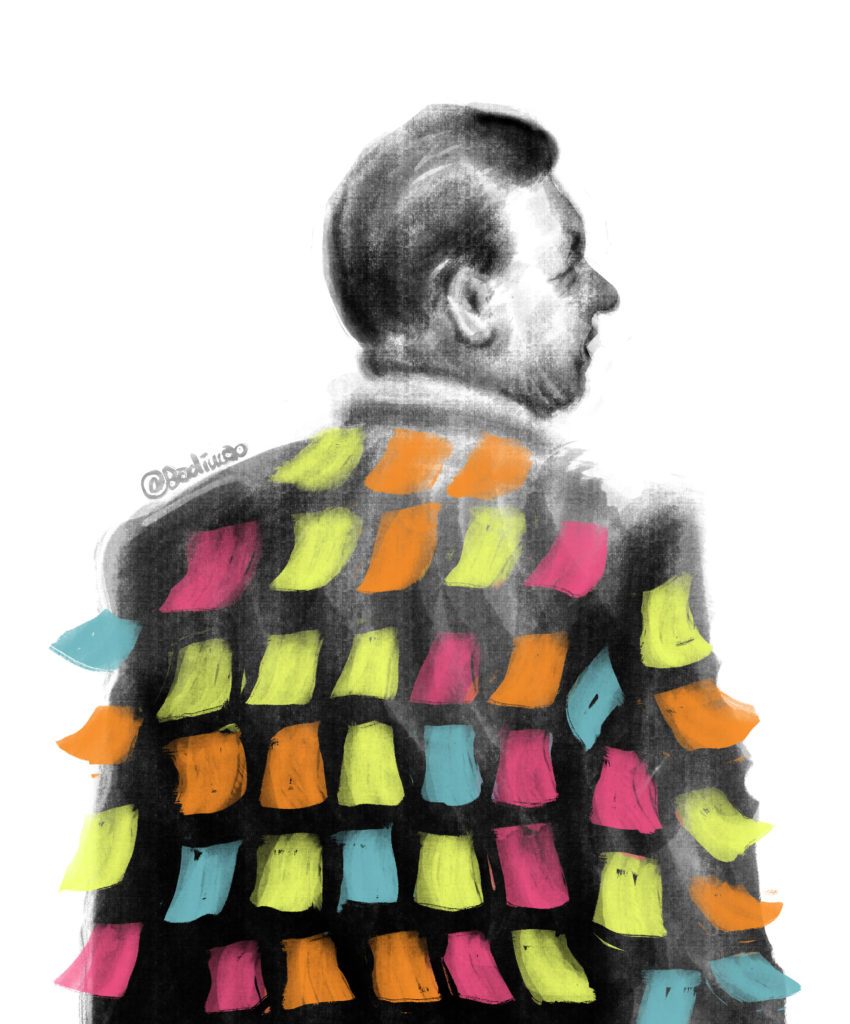
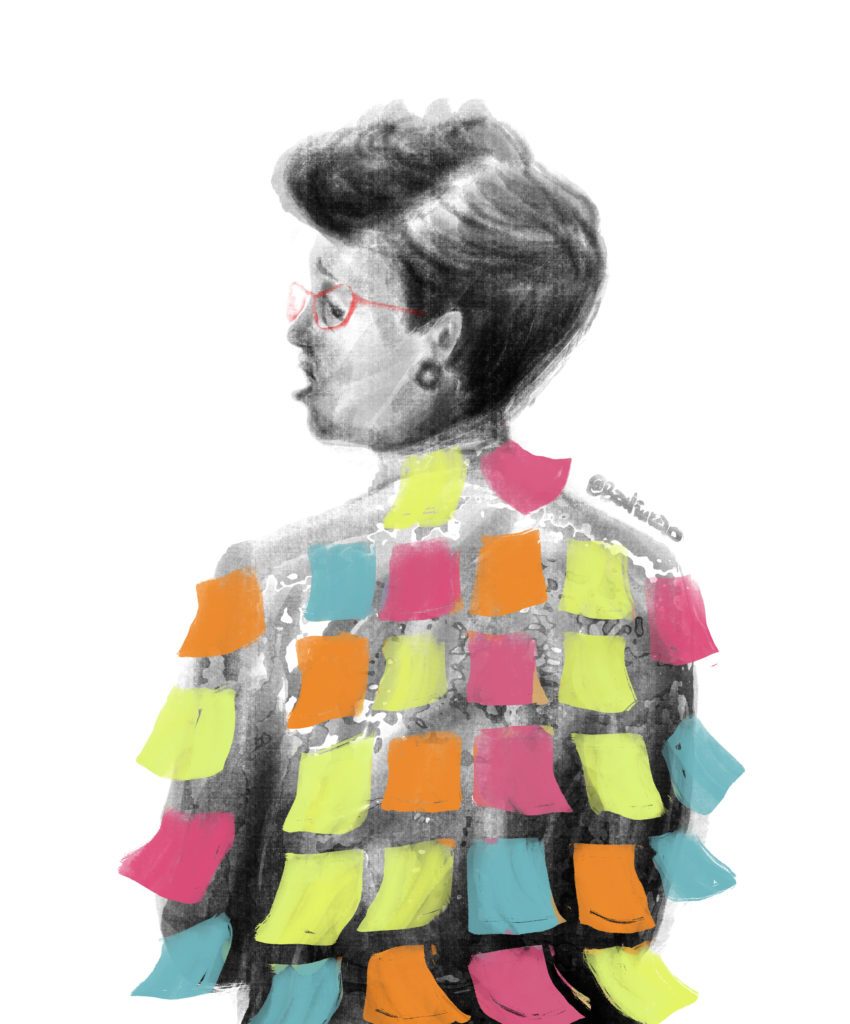
The battle for Hong Kong has been taking place not only in the city’s streets. The online world of information has been an equally active arena of conflict – so much so that Hong Kong’s digital activists refer to themselves as the “Keyboard Front Line.”
In this leaderless movement, coordination among the protesters has been taking place in forums like LIHKG – a lo-fi Hong Kong version of Reddit – and Telegram chat groups. Protest actions are proposed and voted upon in online polls, and messages passed among protesters on the ground via Telegram or, increasingly, AirDrop – a peer-to-peer technology that does not rely on mobile network availability. But though the movement is grassroots and democratic, several dissident artists play a key role.
Satire from Shanghai via Melbourne
I met the Chinese artist Badiucao at a cafe on the quiet backstreets of Melbourne, Australia, a long way from Hong Kong’s chaotic clashes. Originally from Shanghai but residing in Australia for over 10 years, Badiucao’s satirical artwork, which often mocks the Chinese authorities, first came to prominence in Hong Kong during the Umbrella Movement protests of 2014. He has since been a regular contributor to Hong Kong independent English-language news organization, Hong Kong Free Press.
Although Badiucao has never lived in Hong Kong, the protests are personal. Last year, a major exhibition of his work set to be held in Hong Kong was abruptly canceled following threats made to his family in the mainland. His own situation, he says, is symptomatic of the broader erosion of civil liberties in Hong Kong. “I have always received so much help and support from the Hong Kong community, both before and after my show was canceled,” Badiucao explains. After the cancelation, supporters printed out posters of his work and pasted them across the facade of a state-owned bookstore. “It’s sad for me to witness these good people and this great community being destroyed,” he says. “I can’t stay silent in the face of that.”
Badiucao’s work remains banned in China. Yet a major piece – a large-scale neon depiction of Nobel prize-winning dissident Liu Xiaobo and his wife Liu Xia – was fabricated in China, through the Taobao online sourcing site owned and operated by mainland internet giant Alibaba. Badiucao chuckles, “The censorship system is so effective on the mainland they didn’t even know what they are making is banned.”
In the current protests, Badiucao’s art poses as much of a challenge to Beijing’s authority in the city as do the protesters. “My artwork dissolves their authority,” the artist says. “Satire, humor and absurdity are extremely powerful in deconstructing the arrogance of power.”
On the morning of July 1, as Hong Kong’s chief executive Carrie Lam held an official event to mark the anniversary of the handover, police pepper-sprayed protesters who had massed outside the venue. Badiucao’s response was almost instantaneous. Within hours, his version of the official photograph of Lam’s toast, with symbols of the protests – hard-hat, umbrella and raincoat – floating in a sea of blood, was circulating online.
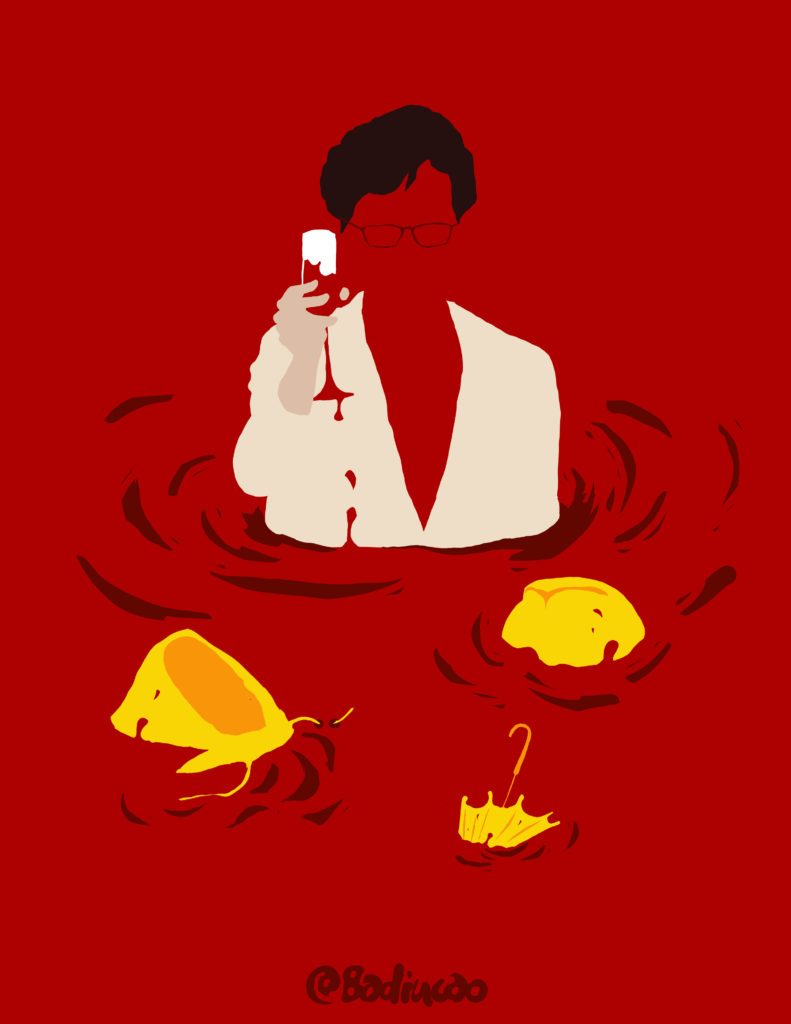

In another recent disturbing incident, Triad gang mobs attacked commuters in a suburban train station while police appeared to stand by without taking action. The police version of events was that they did not see any armed people in the vicinity. When images emerged of police standing and chatting to the armed thugs, Badiucao adapted those images to give his view of the cozy relationship between the police and the organized crime gangs. Observes Badiucao, “Wrestling directly with power is not always wise, but if you embarrass them, then you can really drive them crazy.”
But though big-name artists have played an important role, regular protesters have also contributed vast amounts of satirical, biting art.
Online, protesters have distributed vast amounts of memes, satire and protest artwork generated by the movement. Today, any commuter on the city’s subway system with the AirDrop function on their phone turned on will invariably receive several unsolicited protest-themed graphics or memes on any given day.
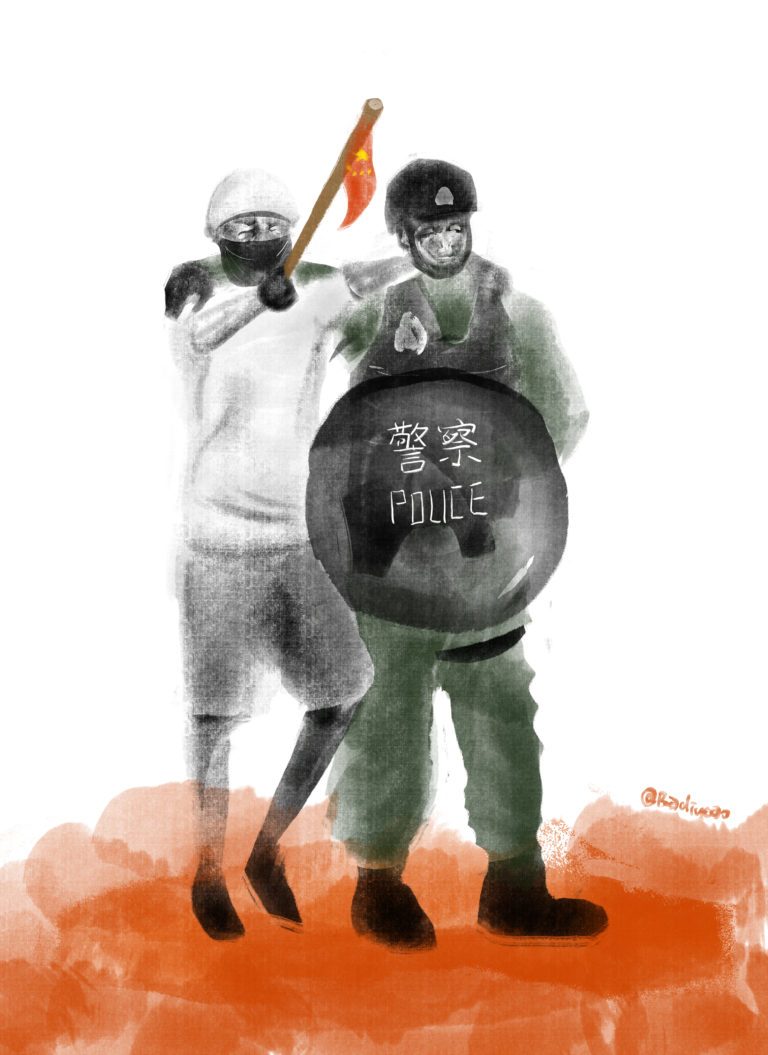

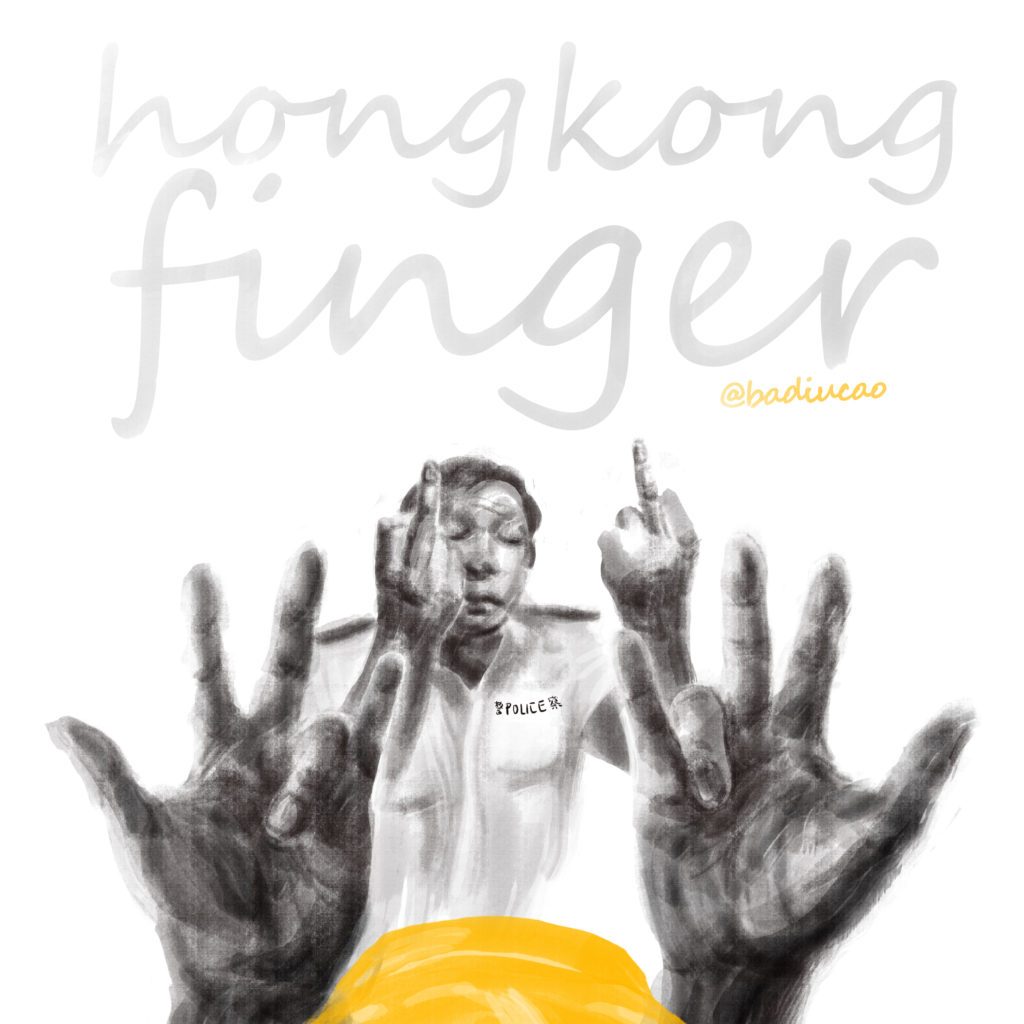
The creativity and complexity some of these works show are impressive, such as an anime-style short movie illustrating the protesters’ demands, which was produced in multiple languages and circulated online.
Many of the creative works respond to current events and images which have appeared in the press. For example, after shoppers were caught up in a violent clash between protesters and police in the suburban New Town shopping mall, with protesters alleging that mall management were complicit in allowing the police to attack them, online satirists created a poster for the mall depicting the mayhem with the slogan “A whole new shopping experience.”
The works also create an often satirical counter-narrative to the official version of events promulgated by the Hong Kong government and police. Online remixers took advantage of the irresistible opportunity presented by officials from Beijing’s Hong Kong and Macau Affairs Office giving a press conference in front of a plain blue screen to subvert Beijing’s message and insert their own.
After the New Town mall clashes, police reported that a protester had bitten off an officer’s finger. When footage subsequently emerged to show that, not only had the finger merely been bitten but remained attached but that the incident had occurred only when the officer in question fish-hooked a protester’s mouth, the online satirists went to work. The image quickly made its way back onto the streets, with protesters reportedly giving a “missing finger salute” to taunt police.
This interaction between the online and offline worlds, between the information war and the conflict on the streets, has been a notable feature of the Hard Hat Revolution protests. As official and counter-narratives compete, artists have often found themselves at the center of this vortex.
Kokdamon, a Hong Kong artist currently based in Switzerland, created his image of Tank Man holding up a mobile phone in June to commemorate the 30th anniversary of the Tiananmen Square Massacre. Some activist friends asked him if they could borrow the image for a rally in Hong Kong to mark that occasion, and from there the image took on a life of its own. In recent weeks, it has appeared on signs carried by elderly Hong Kong protesters joining a “silver-haired march” to support the young front-line activists.
“I wanted the image to show that we have no fear of keeping a record of what’s happening,” says Kokdamon. “I never expected my image to spread in this way, but I am touched that it has. I hope that it can help people to think about their responsibility, and their power.”
Reflecting on the role visual expression has played in the present protest movement, in particular on the Lennon Walls, Kokdamon says, “This has in some ways shaken the whole position and role of artists. It’s not just artists responding, it’s ordinary citizens – the people are the ones who are standing up and expressing themselves. It’s beautiful.”
Still, the protests have given a boost to censored artists like Badiucao. His images are widely circulated online and can also be found on Lennon Walls across the city. “When my show in Hong Kong was canceled, my gallery was stripped away from me,” he says. “But now, with my work in the hands of the protesters out on the streets, the whole city is my gallery! I don’t think any artist could ask for more than that.”
The power of ideas
Authorities in Beijing have responded to the protesters in a way that recognizes the dangerous power of ideas. On the mainland, a news blackout on the protests was lifted recently to enable state-owned media to issue stories characterizing the movement as a foreign-led “color revolution” plot. In recent weeks, pro-Beijing elements arranged to bus in several coachloads of mainland tourists in the dead of night to destroy one of the city’s largest Lennon Walls. They tore down posters and festooned the walls with the national flags of the 8 foreign nations which invaded China during the Opium Wars era. They also left large funeral wreaths with the photographs of Hong Kong pro-democracy politicians and Taiwan’s independence-leaning President Tsai Ing-wen.
Word spread quickly online, and the next morning volunteers were hard at work scrubbing the walls to clean up the mess left by the pro-Beijing group. By lunchtime, a new Lennon Wall was blooming again. The activists retained the funeral wreaths and replaced the photos with images of Carrie Lam and her unpopular cabinet. They did, however, make one addition: a sign reading, “Thank you Mainland compatriots for donating the flowers!” – Rappler.com
Antony Dapiran is a Hong Kong-based writer and lawyer and the author of “City of Protest: A Recent History of Dissent in Hong Kong,” published by Penguin.
This article has been republished from Coda Story with permission.
Add a comment
How does this make you feel?





There are no comments yet. Add your comment to start the conversation.